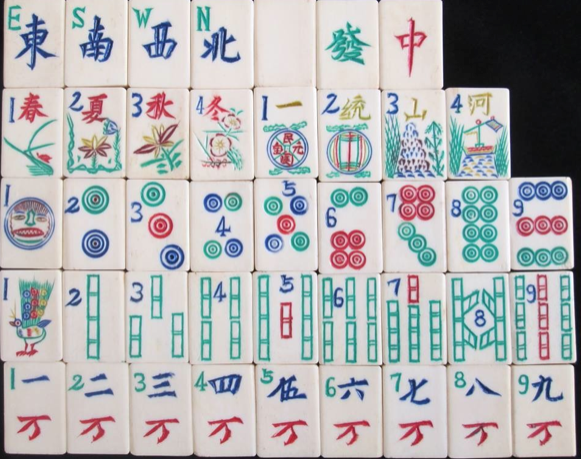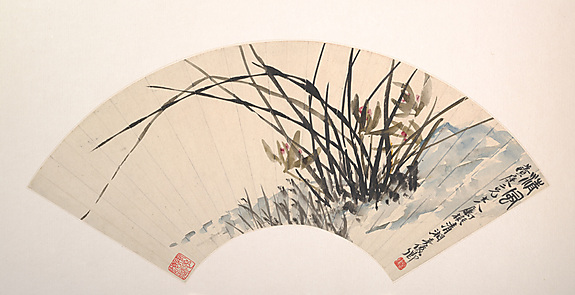The beautiful dish seen above dates from the middle of the Ming Dynasty and is in the collection of the Netherlands National Museum of Ceramics. You can clearly see the four different varieties of fish, with the carp on the middle upper right, at 1:00 o'clock, recognizable by his barbels. The Chinese word for carp is bai, interestingly also translated into English as one hundred, so the word itself connotates success. The other fish are qing, a fresh water mullet, a lian, a kind of bream, and a gui, a mandarin fish with a large mouth, seen at the 4 o'clock position.
C.A. S. Williams writes
"Fish forms an important part in the domestic economy of the Chinese. Together with rice it constitutes the principal staple of their daily food, and fishing has for this very reason formed a prominent occupation of the people from the most ancient times.... the fish is symbolically employed as the emblem of wealth or abundance, on account of the similarity in the pronounciation of the words yū, fish, and yū superfluity, and also because fish are extremely plentiful in Chinese waters...."
While doing research for these posts, it seems that scenes appear on some forms of art more often than on others. There seems to be a big overlap with scenes on Chinese porcelains and Mahjong tiles. The design style principles seem to be the same, but the subject matter, and ways of showing the subjects are similar with porcelain and Mahjong.
These are two more Flower tiles belonging to reader Bill, from the same set as the carp we saw the other day. You can see how both fish are different, one from the other. Their heads, bodies and tails are distinct, and probably can be easily recognized by people who know their fish. It is not clear what the object is on tile #1, but the crab is easy to make out on tile 2. The beautiful deep blue water on these tiles is another visual treat.
Studying tile #2 a bit more, I noticed the fish's tail is breaking the surface of the water. I wonder if it might be a sturgeon, a type of fish treasured by the Chinese, which is unusual in that it lives in both fresh and salt water, although on this tile you can see the artist clearly intended this to be salt water, given the presence of the crab.
From Wikipedia:
Most sturgeon are anadromous meaning they spawn in fresh water and migrate to salt water to mature.
The Chinese sturgeon can be considered a large fresh water fish, although it spends part of its life-cycle in seawater, like the salmon,[4] however; Chinese sturgeon spawn multiple times throughout their life.
The Chinese sturgeon has a habit of upstream migration: they dwell along the coasts of China's eastern areas and migrate back up rivers for propagation upon reaching sexual maturity. It has the longest migration of any sturgeon in the world and once migrated more than 3,200 km (2,000 mi) up the Yangtze.[5] The sturgeon's reproductive capacity is poor: it may breed three or four times during its life-cycle, and a female sturgeon can carry in excess of a million eggs in one pregnancy, which are released for external fertilisation when mature. The survival rate to hatching is however estimated to be less than 1 percent.[4]












